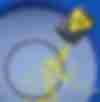How do you measure the diameter of a large O-Ring?

ORINGONE has always offered the possibility to produce and purchase O-Rings with non-standard Diameter and Dimensions online.
Our company is characterised by the technology and expertise in the management of each customer’s individual requests, offering the possibility to order even a single O-Ring with dimensional characteristics outside the normal range, always guaranteeing high-quality raw materials and finished products and very fast delivery times.
One of the most important and particular steps for the production of a large O-Ring is the Diameter measurement, here are two methods to obtain true results:
- use diameter gauges (also called circle gauges);
- measure its development by obtaining the diameter by conversion.
Both methods, although valid and effective, have limitations that can influence the evaluation of the measurement for the worse.
How do you measure an O-Ring with a diameter gauge?
First of all, a diameter gauge is a flexible ruler calibrated to the tenth of a millimetre, made of steel and suitable for measuring circumferences and developments of circular objects.
To measure the diameter of an O-Ring, it is placed on the outside of the ring and tightened until it touches the entire outer surface. The measurement of the outer circumference and the relative diameter can be read on the scale, which is pulled to obtain the most precise measurement possible.
This is precisely the weak point of the measurement, since, in addition to the possibility of an imperfect adherence of the O-Ring to the surface of the instrument (a problem that worsens as the diameter increases in size at the same time as the thickness decreases), the measurement of a naturally elastic object is affected by the pressure applied by the measuring instrument on the O-Ring, resulting in a relative variability of the measurement and non-constant repeatability of the same.
How can the internal diameter be measured from the development of the O-Ring?
Basically, the measurement with a diameter gauge is already relative to the circumference (and therefore to the development) of the outer surface of the OR.
By development, however, we mean the linear length and in order to have a precise linear measurement, we should proceed to a so-called destructive measurement test, which, as the name itself says, has the inherent limitations of having to make the product unusable at the end of the procedure.
By cutting the O-Ring as straight as possible according to the radial direction and spreading it on a seat with a “V” section (in order to keep it straight and avoid curvatures that would affect its linearity) we proceed to measure what is called “average development“.
The conversion of the value into an average diameter can be obtained by comparing it to π but it is necessary to be careful to subtract the value of the cord cross-section in order to obtain the relative internal diameter.
Is there an alternative for measuring with more accuracy and repeatability?
As far as O-Rings with standard dimensions or less than 500 mm in diameter are concerned, there have been machines and instruments for some time now that use optical technology to make these measurements (in addition to those relating to product faults), with great accuracy and consistency.
The same cannot be said for all those products with larger dimensions and which represent for ORINGONE the great majority of the O-Rings we produce.
For this reason, we have developed a control machine that is able to measure O-Rings up to measuring their development obtaining the diameter by conversion.
With these machines, we are able to obtain repeatable measurements with the highest possible standard of accuracy, guaranteeing compliance with the centesimal tolerances imposed by ISO 3601-1 (which we guarantee on all our O-Rings).
These machines, by “running” the entire O-Ring through motorized pulleys and with pressure control (to avoid crushing of the thickness that would lead to a lengthening of the development) measure the exact development and thickness of the products returning the minimum, average and maximum values of the cord cross-section and the inner, average and outer diameters, with the guarantee of control over the entire length.
Along with the measuring procedures, the machine is also able to check the surface for defects or non-conformities.
For more information and technical details, please contact us.











































